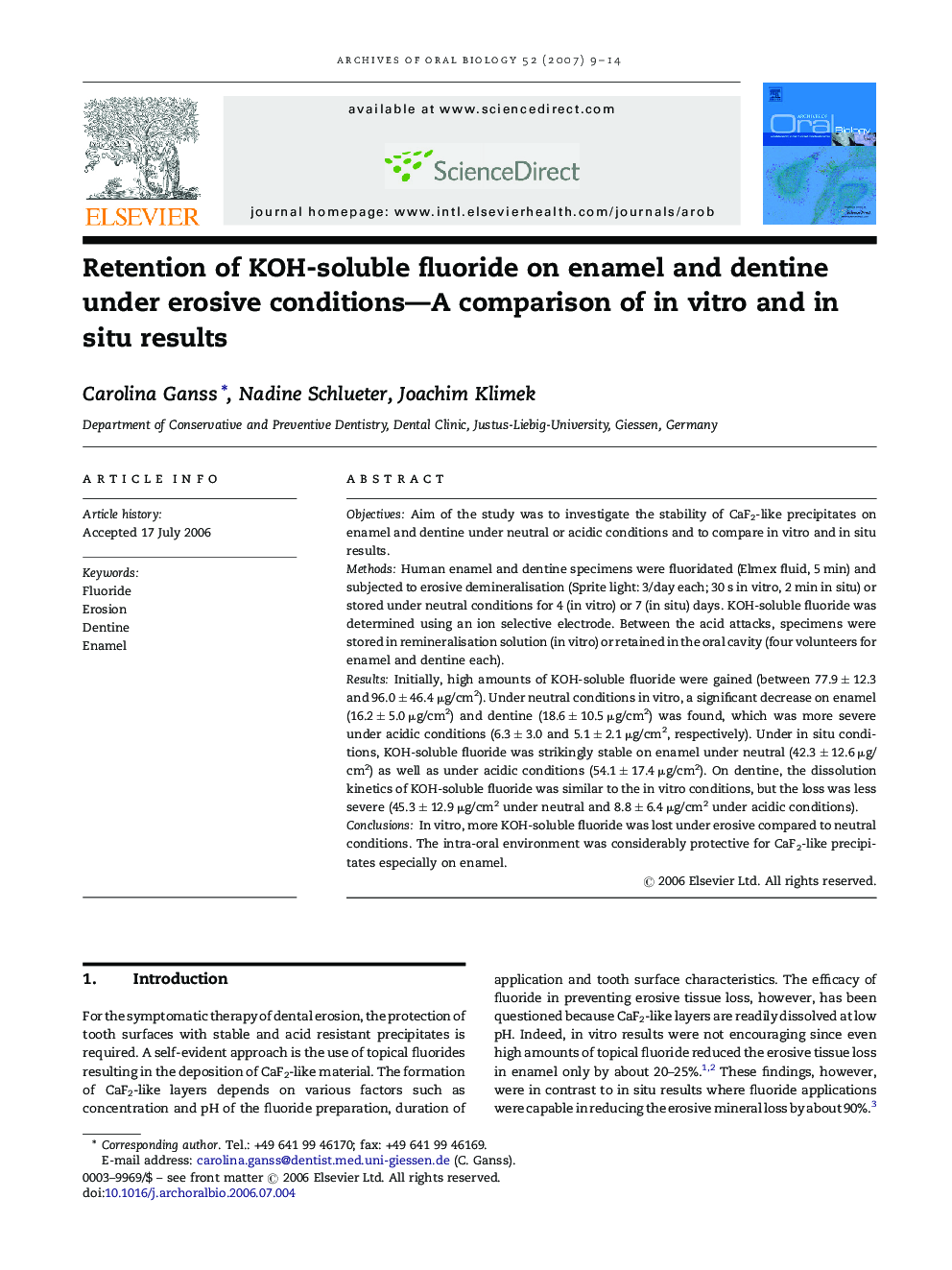| Article ID | Journal | Published Year | Pages | File Type |
|---|---|---|---|---|
| 3121773 | Archives of Oral Biology | 2007 | 6 Pages |
ObjectivesAim of the study was to investigate the stability of CaF2-like precipitates on enamel and dentine under neutral or acidic conditions and to compare in vitro and in situ results.MethodsHuman enamel and dentine specimens were fluoridated (Elmex fluid, 5 min) and subjected to erosive demineralisation (Sprite light: 3/day each; 30 s in vitro, 2 min in situ) or stored under neutral conditions for 4 (in vitro) or 7 (in situ) days. KOH-soluble fluoride was determined using an ion selective electrode. Between the acid attacks, specimens were stored in remineralisation solution (in vitro) or retained in the oral cavity (four volunteers for enamel and dentine each).ResultsInitially, high amounts of KOH-soluble fluoride were gained (between 77.9 ± 12.3 and 96.0 ± 46.4 μg/cm2). Under neutral conditions in vitro, a significant decrease on enamel (16.2 ± 5.0 μg/cm2) and dentine (18.6 ± 10.5 μg/cm2) was found, which was more severe under acidic conditions (6.3 ± 3.0 and 5.1 ± 2.1 μg/cm2, respectively). Under in situ conditions, KOH-soluble fluoride was strikingly stable on enamel under neutral (42.3 ± 12.6 μg/cm2) as well as under acidic conditions (54.1 ± 17.4 μg/cm2). On dentine, the dissolution kinetics of KOH-soluble fluoride was similar to the in vitro conditions, but the loss was less severe (45.3 ± 12.9 μg/cm2 under neutral and 8.8 ± 6.4 μg/cm2 under acidic conditions).ConclusionsIn vitro, more KOH-soluble fluoride was lost under erosive compared to neutral conditions. The intra-oral environment was considerably protective for CaF2-like precipitates especially on enamel.
